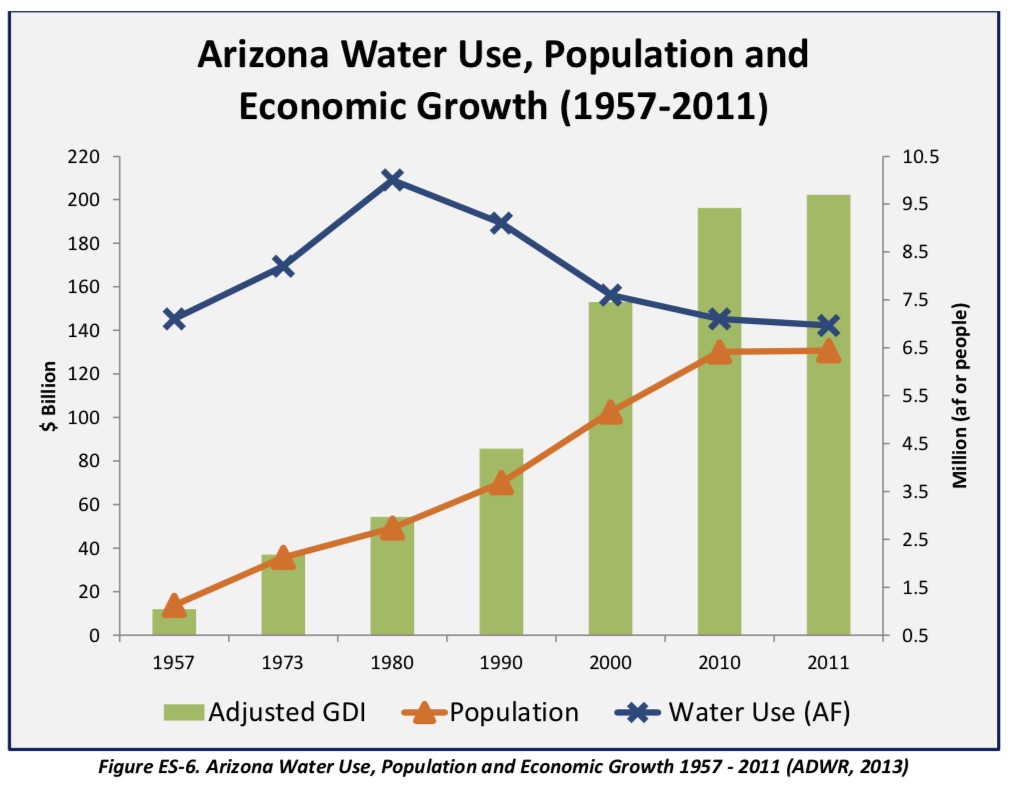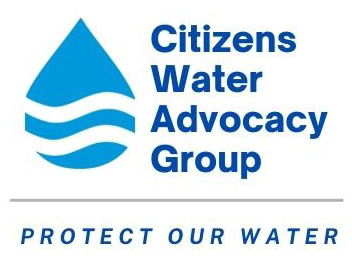Water conservation has tremendous potential to reduce the stress on our rivers and to extend the lifetime of our water supply.
Unfortunately, this potential is not now being recognized. Everyone loves the idea, yet not enough is done to achieve a low water use community. Here are a few of the beliefs that inhibit aggressive water conservation:
-
Underestimating the Potential
Underestimating the Potential
Historically, water conservation programs have significantly reduced water consumption in Arizona. For example, ADWR has published this graph in 2012:

It is true that Arizona GDI (a measure of economic activity) and population have increased while total water use has decreased; the Prescott AMA has similar results. This shows that conservation works. We are concerned that some water managers may assume that further reductions are impractical. Actually these results represent only the "low hanging fruit." Much, much more must be done.
-
General resistance to change
General resistance to change
Change is difficult for everyone. Change is uncomfortable at first because it replaces comfortable and customary behaviors with uncertainty. Change requires new behaviors that seem initially unfamiliar.
-
Limits to educational/incentive programs
Limits to educational/incentive programs
Surveys of water user attitudes show that voluntary, educational strategies are acceptable and that mandatory programs are not wanted. Unfortunately, voluntary programs have limited effectiveness. Mandatory water conservation requirements are much more effective, but risk consumer dissatisfaction and complaints. Public officials avoid controversial regulations.
-
Concern that Conservation Supports Growth
Concern that Conservation Supports Growth
“Why should I scrimp so somebody else can move here?” When a city promotes conservation, citizens may cynically assume that the underlying reason is to facilitate growth. Local governments do promote growth, so this association is somewhat understandable.
For Prescott, conserved water facilitates the construction of new homes unless all the recovered wastewater is dedicated to permanent recharge which is currently a very small amount. Prescott Valley has a weak water conservation program, but conserved water does not support new construction. The difference lies in complex water regulations administered by ADWR.
